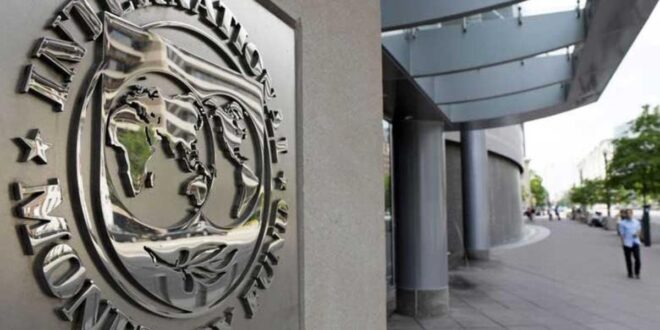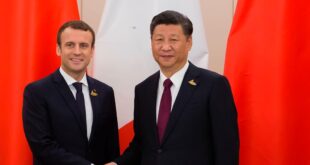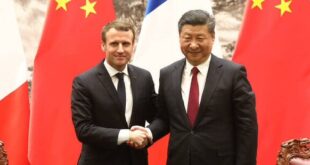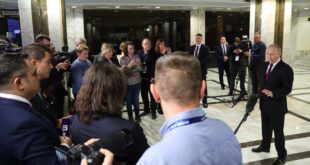Sahar Ragab
Amid mounting debt burdens exceeding $650 billion and a scarcity of low-cost financing alternatives, African nations are increasingly turning back to the International Monetary Fund (IMF) as a primary lifeline.
Since the onset of the COVID-19 pandemic in 2020, the Washington-based lender has disbursed nearly $69 billion in financing to the continent, according to a Bloomberg report published on September 12, 2025. With ongoing global economic shocks expected to persist, the IMF anticipates continued lending, signaling a shift in the relationship from historical tensions to greater collaboration—despite persistent public protests against the Fund’s austerity-linked conditions.
An IMF spokesperson confirmed in an emailed response to Bloomberg: “We see continued demand from African countries for IMF support, including new programs, extensions, and augmentations, driven by ongoing shocks and elevated debt pressures.
” This assistance arrives at a critical juncture, as United Nations data cited in the report indicates that the continent’s external debt has surpassed $650 billion, with debt servicing costs alone reaching approximately $90 billion in 2024.
Recent governance reforms at the IMF, including increased African representation on its Executive Board, have helped improve perceptions of its legitimacy and inclusivity.
Extended Programs and New Negotiations: 20 Countries in Line
The current wave of engagement involves around 20 African countries with active programs or in various negotiation stages, including Egypt, Benin, and Ghana, which are receiving ongoing support to bolster fiscal stability. Meanwhile, nations like Malawi, Kenya, and Mozambique are working to revive previously suspended programs due to unmet IMF targets, such as public spending reforms.
Uganda and Senegal are negotiating fresh programs to address liquidity strains, while Zambia seeks an additional one-year extension to its existing arrangement.
Despite this cooperation, public discontent remains a flashpoint. Angola saw violent protests in July after fuel subsidy cuts mandated under an IMF program, and Kenya experienced widespread demonstrations in 2024 against tax hikes required to meet Fund conditions.
Bloomberg notes, however, that the dynamic has grown “more collaborative,” with the IMF viewed as an “essential partner” providing foreign currency liquidity and concessional financing amid limited options.
Zineb Hussein, chief Africa analyst at Pangaea-Risk, stated: “Many country leaders are treating the IMF as a necessary partner that can support foreign currency liquidity and provide concessional financing amid debt and fiscal pressures.
” She added that reforms enhancing African voting shares have “contributed to improving perceptions around its legitimacy and inclusivity.”
Swelling External Debts: Necessity or Trap?
Jack Neil, head of African economics at Oxford Economics, describes the reliance on the IMF as “a matter of necessity,” explaining that “international liquidity conditions are starting to improve, but many African countries have racked up costly debts.
” High debt levels are pushing foreign investors to demand steeper risk premiums, while governments have exhausted local capital markets to the point of crowding out the private sector.
The report highlights that African external debt has ballooned by up to 300% in countries like Kenya over the past decade, fueled by the pandemic and geopolitical conflicts.
Yet, debates rage over the austerity policies tied to IMF programs, often criticized for exacerbating social inequalities. A 2021 International Labour Organization (ILO) study found that the Fund imposed fiscal tightening even during the pandemic’s peak, drawing fire from experts like Alexandros Kentikelenis and Thomas Stubbs in their 2023 book The Thousand Cuts, which portrays IMF strategies as a “cycle of debt and austerity” that hampers genuine development.
Continental Outlook: Between Rescue and Autonomy
Demand for IMF funding is projected to continue, particularly as sub-Saharan Africa’s growth slowed to 3.6% in 2023, per the Fund’s Regional Economic Outlook.
In a statement to Africa Face, Neil affirmed: “Rising debt levels are forcing foreign investors to demand higher risk premiums, at a time when governments have depleted local capital markets to the extent that it threatens to crowd out the private sector.
” This leaves Africa with a stark choice: returning to Washington as the main funding source or pursuing regional mechanisms like the African Export-Import Bank to break the cycle.
In this context, the IMF evolves from mere lender to strategic ally in confronting an expanding debt crisis. But at what cost to African peoples? The answer lies in leaders’ ability to balance reforms with economic sovereignty—turning this return into a bridge to stability rather than another Faustian bargain.
 موقع وجه أفريقيا موقع وجه أفريقيا هو موقع مهتم بمتابعة التطورات في القارة الأفريقية
موقع وجه أفريقيا موقع وجه أفريقيا هو موقع مهتم بمتابعة التطورات في القارة الأفريقية



